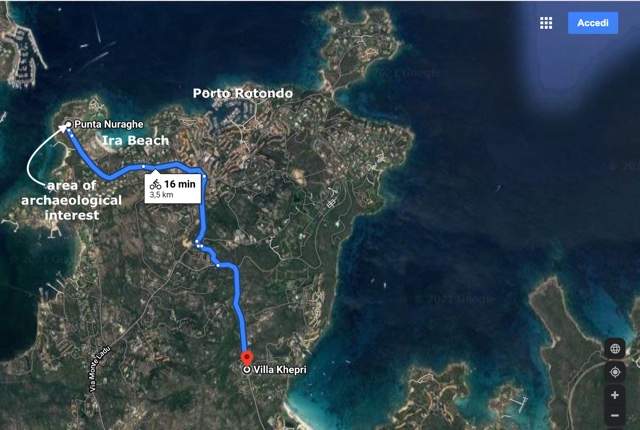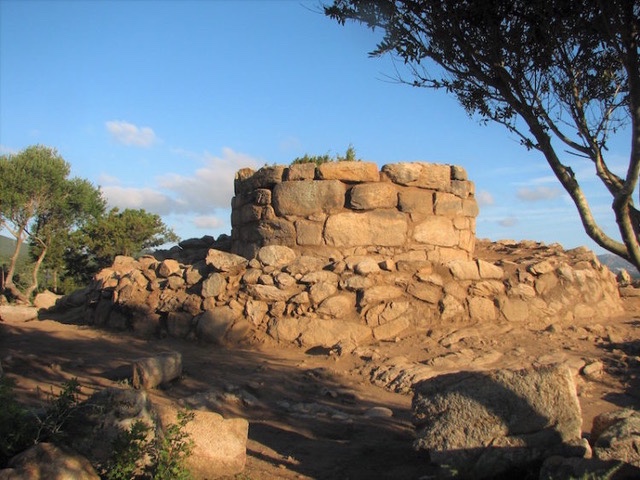Bike tour
Punta Nuraghe, Porto Rotondo
The itinerary by bike lasts 16min with departure from villa Khepri.
In a short time you can also visit one of the most beautiful beaches of Porto Rotondo ( Ira beach ) a few minutes, on top of the promontory of Punta Nuraghe, which closes the Gulf of Cugnana to the east, stands a Punic tower.
The offshoot of the coast takes its name from the monument itself, because the few rows of blocks emerging from the mass of land and the stones of the collapse were interpreted, until the time of excavation, as the remains of a small single tower nuraghe.
The monument, so far unique in Sardinia, after the excavation was consolidated and made accessible, again thanks to the generosity of the Consortium of Porto Rotondo.
The excavation of the tower was carried out in several stages between October 2011 and October 2012 with funds from the Consortium of Porto Rotondo, and was directed in the field by Paola Mancini, under the supervision of Rubens D’Oriano as archaeological officer responsible for Olbia of the then Soprintendenza per Beni Archeologici of the provinces of Sassari and Nuoro.
The tower (diameter 4.70 m; residual height 2.80 m) is made of a single face of blocks, mostly very large, squared and worked to perfection on the outer face and left rough on the inner one (in some cases, certainly to ensure stability to the structure, the surface of the block extends inside the chamber).
The integral excavation has returned finds from the collapses, from exploratory essays in the filling of the beam – while those inside the tower were unsuccessful – and from the base of the same.
The most ancient materials fix the erection of the monument in the final decades of the IV cent. b. C, or at the latest at the beginning of the IIIrd century (330 – 280 circa), as it is strikingly shown by the foot of a typical Punic basin found at the base of the beam in contact with the virgin rock, which finds precise comparisons in specimens of the Punic phase of the nearby Olbia from such dated contexts. In the II and most of the I sec. a. C. (100 – 30 approximately) the documentation is limited to a few examples of wine amphorae produced on the Tyrrhenian coast of the Italian peninsula.






